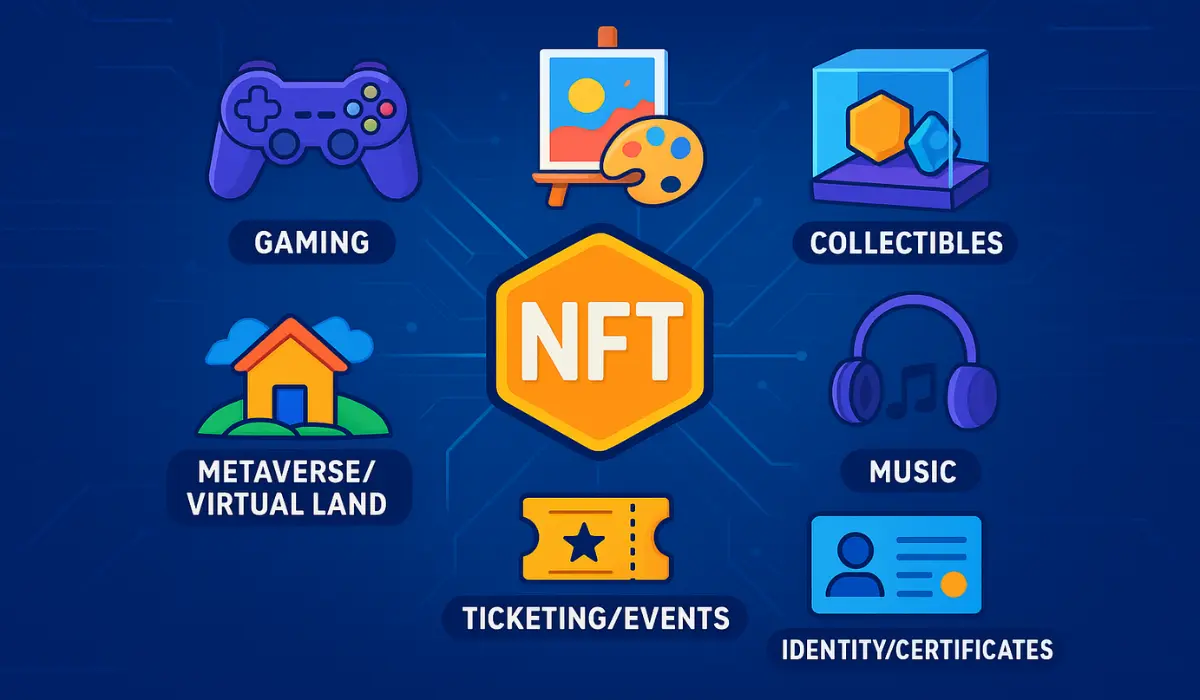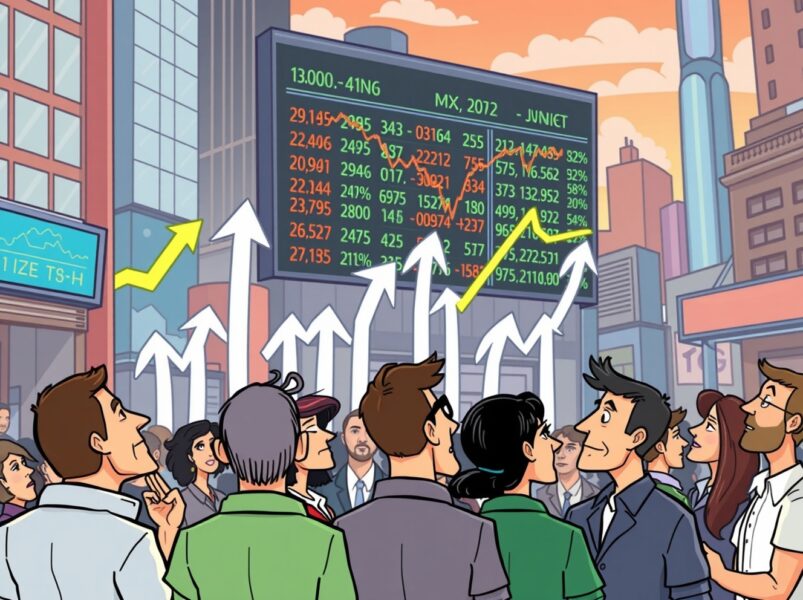What are Non-Fungible Tokens? (NFT) How It Works
Hey crypto enthusiasts, have you ever thought about purchasing an NFT? Do you know one thing? NFT offers various benefits to users, and its use cases are long and wide-ranging. Applications for NFTs exist in distinct fields such as real estate, domain names, music, and visual arts. Despite the bright future of NFTs, it is still reasonable to consider significant challenges.
Come, let’s explore more about Non-Fungible Tokens. This article explains what NFTs are, along with key examples, their history, uses, and main concerns associated with NFTs.
What are Non-Fungible Tokens? (NFT)
NFTs (Non-Fungible Tokens) are unique digital assets in which their authenticity and ownership are verified by a blockchain. They cannot be swapped on a one-to-one basis like other popluar cryptocurrencies, such as Ethereum, Bitcoin, and others. NFTs offer a transparent and protective way to ensure ownership of unique digital assets like music, art, or in-game items. Further, it grants creators as well as artists to analyse their work, often leaving intermediaries and boosting them to obtain royalties on successive sales.
Non-Fungible Tokens can provide a sense of rarity for digital assets, as they are indivisible and unique, which helps to enhance their value. It establishes rarity and uniqueness for digital assets by developing a public, tamper-proof record of authorization on a blockchain. The key features of NFTs include immutability, indivisibility, ownership and control, uniqueness, and proof of authenticity. Some of the popular examples of NFTs are Mutant Ape Yacht Club (MAYC), Bored Ape Yacht Club (BAYC), Pudgy Penguins, Crypto Punks, Azuki, Decentraland, Artificial Intelligence, Axie Infinity, CryptoKitties, Doge and so on. Non-Fungible Tokens are being explored for a broad range of apps beyond collectibles and digital art, involving supply chain management, music, gaming, Web3 identity, certifications, and virtual real estate.
History of NFTs
Non-Fungible Tokens were developed many years ago, before they became familiar in the mainstream. Its story began with the early experiment using the blockchain technology of Bitcoin at the beginning of the 2010s. Quantum was the initial NFT sold, and it was tokenized and designed by American digital artist Kevin McCoy on Namecoin (blockchain) in 2014. Later, it was minted on ETH and sold in 2021.
In 2021, the dictionary publisher, Merriam-Webster, again boosted the cultural acceptance and public presence of the digital assets by auctioning them off for charity by demonstrating a major brand’s engagement with the technology. Many of the Non-Fungible Tokens on the ETH blockchain are developed following the ERC-721 standard, and this indicates how apps manage safe transfers, how the authorization is transferred, and methods for approving transactions.
CryptoKitties is one of the earliest known NFTs, and it is a digital collectible game established in November 2017. Each CryptoKitty is a digital representation of a cat having distinctive cattributes that are developed from the cat’s distinctive identifier on the ETH blockchain. Within a few weeks after the launch of CryptoKitties, it built a strong fan base that spent huge amounts in Ether to breed and purchase them.
After that, in the same year, another NFT named Decentraland was launched, and it is a blockchain-based open world where users can sell and purchase virtual real estate plots. Decentraland’s parcel is connected with its geographical coordinates, having some plots offering a huge value due to their premium location. By following the progress of early Non-Fungible Tokens on the ETH blockchain, other blockchains adopted their own Non-Fungible Token protocols.
What Is the Usage of NFTs?
NFTs are utilized to validate unique ownership of physical or digital assets like virtual land, digital art, collectibles, and even real-world items such as health records or luxury products. It enables creators and artists to sell their unique digital items, like digital art, music, and videos, directly to collectors.

Non-Fungible Tokens can underpin the originality of medicines or high-end products, offering a unique digital token to validate that a digital item is authentic. Further, it offers a verifiable digital certificate of reliability stored on a blockchain, allowing creators to analyze content, individuals to take part in digital ownership, and businesses to combat counterfeiting. It can also be programmed to build royalties for the creator on the entire successive NFT sale, offering an ongoing income stream.NFTs can allow access to communities, exclusive events, or physical items, acting as membership tokens or digital tickets. Furthermore, fashion brands are utilizing Non-Fungible Tokens to offer access to occasions such as fashion weeks and to sell digital clothing. It helps to enhance capital for conservation efforts and also to make on-chain records of special landscapes.
Concerns About Non-Fungible Tokens
Like benefits, NFTs raise the possibility of several issues and difficulties in the crypto ecosystem. The major concerns associated with Non-Fungible Tokens are unresolved legal problems linked with ownership, financial risks, high environmental impact, and extensive scams and fraud.
There is no proper legal description for NFTs anywhere across the world, and various countries are moving forward with distinct classification schemes for Non-Fungible Tokens. One of the market’s greatest obstacles related to NFTs is its difficulty in estimating price. The variables that influence the NFT price are undisclosed. Hence, variation in price value continues unpredicted, making it difficult to examine NFT. Moreover, the complicated and unregulated nature of the NFT market has tended to cause uncertainty and criticism.
Conclusion
NFT is the advancement of the cryptocurrency concept, and it can be considered a technology at the forefront of innovation. It can develop innovative and novel ways to link with clients and stimulate more efficient customer relationships. Volatility encountered in the current NFT landscape has reflected the difficulties connected with a market powered by hype and unprovable values. Moreover, the authorities have an important role in developing core policies that will protect investors and boost their confidence level in the NFT market. As the technology is still in its growing stage of innovation and development, NFTs can indeed tend to unexpected user outcomes. With the accurate checks and balances in the NFT space, the future of Non-Fungible Tokens could be thrilling for everyone.
The post What are Non-Fungible Tokens? (NFT) How It Works appeared first on BiteMyCoin.
You May Also Like

Crucial US Stock Market Update: What Wednesday’s Mixed Close Reveals

Layer Brett Picked As The Best Crypto To Buy Now By Experts Over Pi Coin & VeChain
